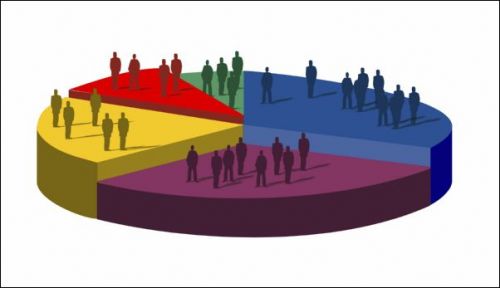Putting churches in their place
 When I moved to Washington over ten years ago, the population demographics were noticeably different than they are now. Many of my older black neighbors and their families have moved to the suburbs in the ensuing years, their homes replaced by younger white couples. A Wall Street Journal "Page One" feature by Conor Dougherty last week picked up on the trend in DC and other major cities and looked at what the changes mean to the culture. There are lots of interesting discussions over class, education battles and political power. I was hoping the article would engage religious issues and I was not disappointed. My own neighborhood of Capitol Hill and surrounding areas has seen many of its churches follow its members out to the suburbs. Those that remain are trying to reach out to white people. I am a member of a church in Alexandria but I have visited a wonderful Lutheran church here in the city where I'd guess the congregation has about as many white members as my congregation has black -- not many. The members there mostly drive in from the suburbs to which they've moved and are worried about the future of their congregation. Here's how Dougherty handled the issue:
When I moved to Washington over ten years ago, the population demographics were noticeably different than they are now. Many of my older black neighbors and their families have moved to the suburbs in the ensuing years, their homes replaced by younger white couples. A Wall Street Journal "Page One" feature by Conor Dougherty last week picked up on the trend in DC and other major cities and looked at what the changes mean to the culture. There are lots of interesting discussions over class, education battles and political power. I was hoping the article would engage religious issues and I was not disappointed. My own neighborhood of Capitol Hill and surrounding areas has seen many of its churches follow its members out to the suburbs. Those that remain are trying to reach out to white people. I am a member of a church in Alexandria but I have visited a wonderful Lutheran church here in the city where I'd guess the congregation has about as many white members as my congregation has black -- not many. The members there mostly drive in from the suburbs to which they've moved and are worried about the future of their congregation. Here's how Dougherty handled the issue:
Washington -- where African-Americans have been in the majority for a half-century -- has lost about 80,000 black residents between 1990 and 2006. Whites had been leaving, too, but recently they've started coming back. Between 2000 and 2006, Washington gained 24,000 whites and lost 21,000 blacks. Whites are now 32% of the population, up from 28% in 2000. Churches Take a Hit
This is a problem for Washington's African-American churches. The past few years, numerous black churches have relocated to suburban Prince George's County, Md., to follow their parishioners. Later this year, Metropolitan Baptist Church (founded by freed slaves during the Lincoln administration) plans to leave town as well.
Some of the remaining black churches are now courting white members. On a recent Sunday, the Rev. John Blanchard, the 64-year-old pastor at Ebenezer United Methodist Church, preached to a thin crowd; several pews were empty. About half his parishioners now live in the suburbs and drive into the city for services. High gasoline prices aren't helping attendance.
So Mr. Blanchard says he's planning to add a white intern to preach with him, in hopes of filling more pews. "You've got to love the one you're with," he says, "but you also need to adjust to the environment you're in."
While his church flounders, the predominantly white Capitol Hill United Methodist Church just down the street is flourishing. There the average attendance on Sundays has doubled to about 120 people the past five years. "Demographics are in our favor. We're attracting the folks that are moving in," says the Rev. Ginger Gaines-Cirelli, 38, who headed the church for five years before recently leaving for a position elsewhere.
It's funny that I literally drive by both of these congregations on my way to my church. Anyway, frequently we discuss journalistic sins of omission. This is a great example of how to include religion in a story. It's part of the fabric of a city and culture. If there are changes to a culture, looking at how that affects religious institutions just makes sense.